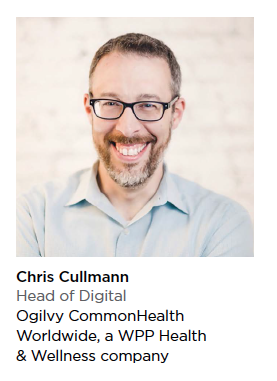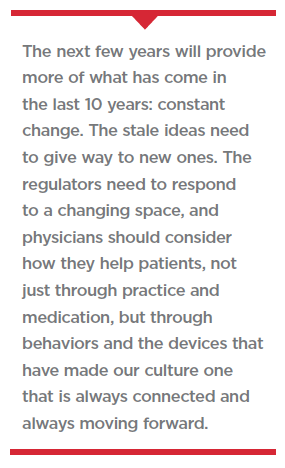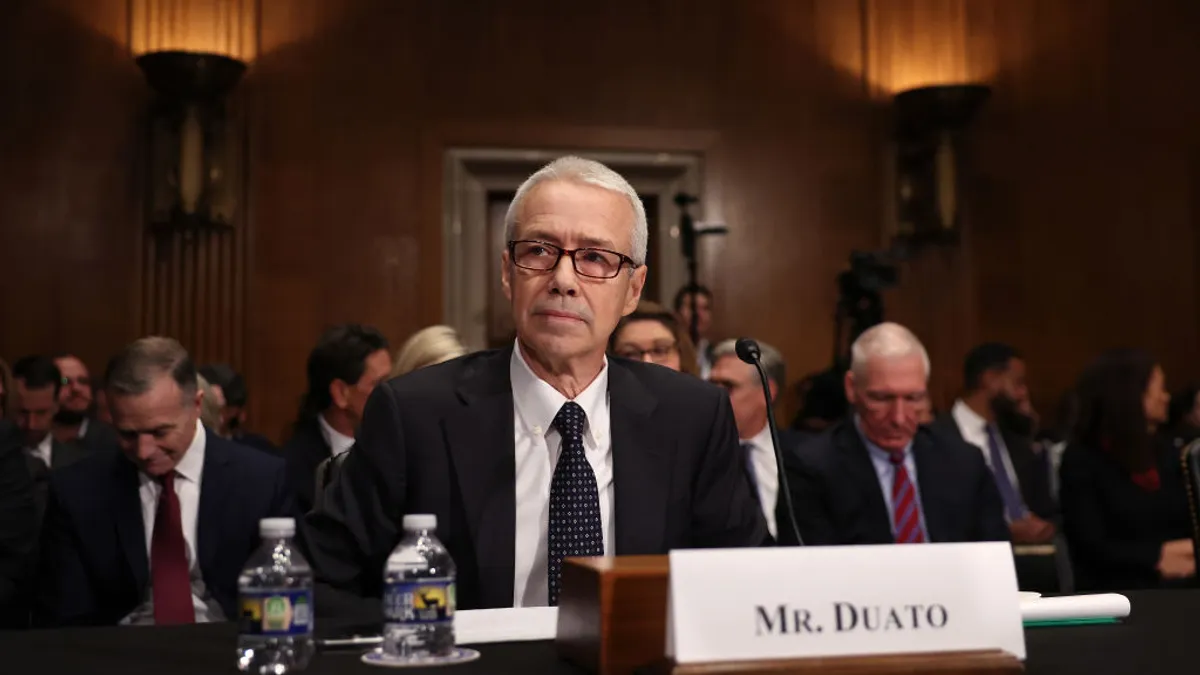Our mobile-first, soon to be mobile-only world
 We live in a mobile-first world. The fact is nearly 7 in 10 Americans1 are using mobile devices every day and many of those are finding less relevance with “desktop" computing. There is something incredibly liberating in having a device with you all the time. A device that can manage communication with friends and loved ones, help us find a ride home, the next meal, manage our finances, and for almost half of patients surveyed in a recent Accenture study2, manage their health via smartphone. All in one spot, always with us, and always connected.
We live in a mobile-first world. The fact is nearly 7 in 10 Americans1 are using mobile devices every day and many of those are finding less relevance with “desktop" computing. There is something incredibly liberating in having a device with you all the time. A device that can manage communication with friends and loved ones, help us find a ride home, the next meal, manage our finances, and for almost half of patients surveyed in a recent Accenture study2, manage their health via smartphone. All in one spot, always with us, and always connected.
The concept of mHealth has gravity that is far bigger than the iPhone that acted as the genesis event and the smartphone category that today carries the majority of context for many audiences. In recent conversations, mHealth also includes the connected devices that are becoming commonplace in 1 in 5 of American homes3 and the peripheral devices that manage our climate systems, turn on and off our lights, and open and close our doors.
An ideal Opportunity
mHealth can help open a new arena for healthcare support of what is a massive logistics problem in care. Baby Boomers are one of the largest generational populations and their care involves a new suite of problems in hands-on care, access, and sheer volume on the U.S. healthcare system.
For the generation that ushered in first sparks of the internet and has seen a decades-long technological evolution, connected health is going to be a new bridge to care. The number of Americans over the age of 65 is quickly ballooning. This is a generation that is accustomed to technological advances, a changing model in care, and has come of age in an era of empowerment. This is the ideal generation to engage in large-scale autonomous observation and at-home digital care.
Where the healthcare system had previously counted on self-reported data for compliance and habitual information, connected devices and data collected from smartphones, fitness trackers, and digital diaries can paint a portrait of the patient in their own environment and without the “edited" version of health most patients recollect during physician visits.
In addition to data captured about the growing Baby Boomer population, mobile health solutions also make access to the physician more convenient via mobile telemedicine and video conferencing technologies. For many Americans, proximity to healthcare facilities is a burden and may require several hours of transit and dependencies on caregivers or public transport. Inexpensive telemedicine can lessen challenges and provide more frequent and meaningful relationships with healthcare professionals.
Supporting Physicians in the Adoption of mHealth
 For many physicians, patients presenting mHealth data without specific coordination is a challenge. The data is difficult, if not impossible, to append to practice-based EHR systems and data is not standard in format or accuracy. In addition to the utility and ease of use, there was no way for physicians to recognize the time invested in reviewing these records. There was little motivation to make use of the data that engaged patients were bringing to their physicians.
For many physicians, patients presenting mHealth data without specific coordination is a challenge. The data is difficult, if not impossible, to append to practice-based EHR systems and data is not standard in format or accuracy. In addition to the utility and ease of use, there was no way for physicians to recognize the time invested in reviewing these records. There was little motivation to make use of the data that engaged patients were bringing to their physicians.
In January 2018, a model for change was presented. CMS created a parameter in their standards allowing practicing professionals the ability to code time invested in “analysis of clinical data stored in a computer." The code paves the way for a mutually beneficial inclusion of personal digital health data to enter the everyday workflow of physicians and other healthcare professionals.
The same code opens the door for physicians to make recommendations and identify behavioral aids to help with healthcare issues. Such solutions can yield an improved quality of care without additional costs. The addition of applications and mobile healthcare solutions is a significant opportunity for pharmaceutical manufacturers and large healthcare organizations.
FDA Guidelines
The FDA has published4 and updated several iterations of their guidelines for mobile apps pertaining to health. Diagnosis and data privacy are key themes. Given the possibilities for applications for smartphones in healthcare, the guidelines are high-level at best. Regardless, many companies are answering the growing patient desire for technology to address their healthcare needs. The lack of clarity has resulted in a chilly reception from physicians. There are early adopters, but making practice decisions requires a study in health populations and policy.
Prescribing Technology
The maturing of technology, a motivated patient, FDA guidelines, and access all point to circumstances that should result in rampant adoption of mHealth by healthcare professionals. So where is the rush to adopt?
Why can’t your next prescription come from the App Store?
There are some categories of medicine that are taking advantage of the addictive behaviors of smartphone use. In 2015, three years ago (a millennial in technology years), Medical Economics reported that 15% of physicians were prescribing mobile apps5. That number has jumped to 40%6 in the years since, but it is still low given the opportunity for many patient populations and mounting positive data in the clinical trials to date.
There are companies leading the way, like Pear Therapeutics which is pioneering clinically proven solutions to address psychiatric and mental health conditions. Their newest software combats opioid addiction, a rising national health issue, with greater results compared to face-to-face therapy alone.
Although augmenting specific therapies provides an FDA-approved solution for patient care, there is also the ability for physicians to leverage apps and the software integrated with the data that they capture to ease the patient’s burden. RevUp is an application that looks at patient behavior and helps craft a personal care plan and change unhealthy behavior through analysis and correctional measures.
Behavioral intervention programs are critical and play an important role in activating patients who need to be more involved — patients who have access to the devices needed to participate in these programs and who are committed to pursuing success. One of the most promising subjects to me personally in the category of mHealth is the ability for individual physicians, institutions, and pharmaceutical manufacturers to “scratch their own itch" in patient care. Even in our own agency, we are developing products that are low-cost and incredibly sophisticated in their ability to address specific patient needs discretely and accurately. Devices that are able to listen, measure, infer, and intervene in illnesses ranging from the common cough, pneumonia, arthritis, colitis, and diabetes.
Strategically, data collected from these programs does not need to be stored or managed by a stakeholder or institution, but rather, through tools available more widely now than ever before, analyzed and processed by artificial intelligence. Coughs can now be understood and categorized. Everyday activities are measured, trends identified, correlated with other captured data, and assessments made that can allow better patient-physician dialogue, and even the activation of a specialist.
Artificial Intelligence
Not part of the mHealth genealogy, I am including it here because, as in the example above, Artificial Intelligence (AI) is no longer the bastion of giant main-frame computers and server farms. AI in all of its various forms allows massive amounts of data to be parsed and intelligent decisions to be made with it for humans to understand. These large sets of data can be processed not for the visualization of longitudinal data, visuals, or a voice-assisted nurse, but rather to help drive smart dialogue with physicians and nurses who are caring for patients every day.
For the end user, all of that value can (and should) quietly be delivered by enabling technology to assist in their health. By inviting these platforms to monitor our behaviors and health we can answer questions about our own health relative to others’. “How often am I coughing" or “what does a bronchial infection sound like" and help drive more productive dialogue — and a shared literacy — with the physicians they are engaging.
Connecting Our Homes
More than 51 million people, 18% of Americans, live in a home with a “connected speaker" like an Amazon Echo or Google Home, according to a 2018 Edison Research study7. This provides a massive extension to our mHealth narrative. This “assistant" revolution will make healthcare’s wider adoption of mobile appear glacial in pace. It is critical that healthcare communicators, organizations, and providers find a way to participate in this space.
No other time before now has there been such a clear way to provide value, intervene in everyday health, and help shape patient health literacy. These devices play a pivotal role in the discrete management of households: They are a hub for entertainment, for validation of facts, for scheduling appointments and helping us keep them. These “voices" in a cylinder are also trusted confidants. It is this Trojan horse of authority that can be bridled with healthcare’s critical message.
In all of the discussions I have had on the subject of mHealth, the connected speaker provides a truly unique opportunity to participate in a patient’s life through subtle value and capture data to be shared with physicians, and also educate patients for a share decision. Patients can be trained to discuss their symptoms, reach out to nurse navigators or call centers, and also better understand their own behaviors.
Products like Amazon Echo and Google Home also come with an assumed trust because we invite them into our homes and they, like any good robot, have personality. The healthcare providers and associated industry should answer this charge: What is your strategy?
The Future of mHealth
The next few years will provide more of what has come in the last 10 years: constant change. The stale ideas need to give way to new ones. The regulators need to respond to a changing space, and physicians should consider how they help patients, not just through practice and medication, but through behaviors and the devices that have made our culture one that is always connected and always moving forward.(PV)
Editor’s Notes:
1 https://numbers-na1.emarketer.com/584b26021403070290f93a22/5851918b0626310a2c186ae4
2 https://www.accenture.com/us-en/insight-new-2018-consumer-survey-digital-health
3 7http://www.edisonresearch.com/infinite-dial-2018/
4 https://www.fda.gov/MedicalDevices/DigitalHealth/MobileMedicalApplications/ucm368744.htm
5 http://www.researchnow.com/~/media/4D4AA4AF3C6140A980F13D2B054DCA08.ashx
6 http://medicaleconomics.modernmedicine.com/medical-economics/content/tags/2014-ehr-scorecard/physicians-guide-prescribing-mobile-health-apps?page=full
Ogilvy CommonHealth Worldwide — a WPP Health & Wellness company — is committed to creativity and effectiveness in healthcare communications, everywhere.
For more information, visit ogilvychww.com.



















